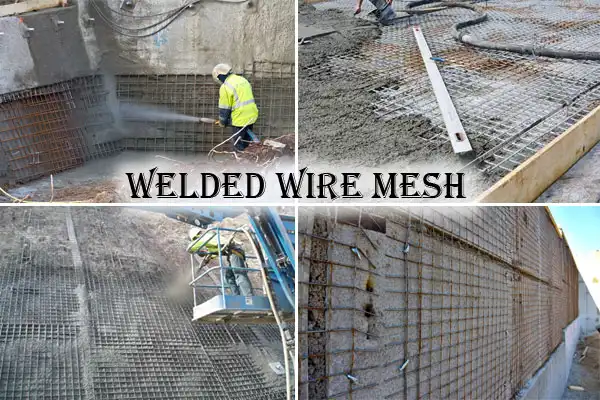Oct . 17, 2024 19:48 Back to list
Serrated Stainless Steel Grating Manufacturer for Enhanced Traction and Durability
Serrated Stainless Steel Grating A Comprehensive Overview
Serrated stainless steel grating is an essential component in various industries, offering a unique combination of strength, durability, and safety. Engineered specifically to provide superior traction and resistance to corrosion, this type of grating has become a popular choice for both industrial and commercial applications. This article delves into the characteristics, manufacturing process, and benefits of serrated stainless steel grating, as well as its various uses and the factors to consider when selecting the appropriate grating for your project.
Characteristics of Serrated Stainless Steel Grating
Serrated stainless steel grating is characterized by its distinctive serrated surface that enhances gripping capacity. This design feature helps to reduce the risk of slips and falls, making it particularly suitable for environments where moisture, oil, or various chemicals may be present. The serrations provide superior traction compared to standard flat bar grate designs, making it safer for personnel and equipment alike.
The material itself is typically comprised of high-quality stainless steel, which is known for its excellent resistance to corrosion, high temperatures, and stress. This makes serrated stainless steel grating an ideal choice for outdoor applications or areas where exposure to harsh environmental conditions is common. The combination of serration and stainless steel creates a robust solution that is both functional and long-lasting.
Manufacturing Process
The manufacturing of serrated stainless steel grating involves several meticulous steps
1. Material Selection High-grade stainless steel is selected based on the specific application requirements, ensuring that the final product meets desired mechanical and chemical properties.
2. Cutting and Fabrication Large sheets of stainless steel are cut into desired dimensions. The serrated pattern is then created using specialized cutting tools or machines, which ensures precision in the design.
3. Welding The cutting process involves creating bearing bars and cross bars, which are then welded together to form a sturdy grating structure. The welding process must adhere to strict quality standards to ensure the integrity and strength of the grating.
4. Finishing Once the grating is assembled, it undergoes finishing processes that may include deburring, polishing, or applying protective coatings to enhance durability and appearance.
5. Quality Control Finally, each batch of serrated stainless steel grating is subjected to rigorous quality control checks to ensure compliance with industry standards and specifications.
Applications
serrated stainless steel grating factory

Serrated stainless steel grating is employed in a wide range of applications across different sectors
- Industrial Facilities Many manufacturing plants use this type of grating for walkways, platforms, and safety covers, where reduced slip potential is crucial.
- Food Processing Its resistance to corrosion makes it a preferred choice in food and beverage production facilities, where cleanliness and safety are paramount.
- Wastewater Treatment The durability of stainless steel grating allows it to withstand harsh chemicals and environmental factors found in wastewater management processes.
- Commercial Buildings Serrated stainless steel grating is also utilized in commercial settings such as shopping malls and parking garages for stairways and access areas.
Choosing the Right Grating
When selecting serrated stainless steel grating for a specific project, several factors should be taken into account
- Load Capacity Determine the load that the grating must support and select a design that meets or exceeds these requirements.
- Environmental Considerations Assess the environmental conditions to ensure the chosen material will provide the necessary corrosion resistance.
- Design Aesthetics Depending on the application, the visual aspect of the grating may be important, influencing the selection of finish or pattern.
- Safety Requirements Consider the level of traction required for the specific application, ensuring that the serration depth and spacing are appropriate.
Conclusion
Serrated stainless steel grating is a versatile solution that enhances safety and functionality across a plethora of environments. Its robust construction, coupled with excellent resistance to wear and corrosion, makes it a valuable asset in industrial and commercial settings. By understanding the characteristics, manufacturing processes, and applications of serrated stainless steel grating, businesses can make informed decisions that drive efficiency, safety, and longevity in their operations. Whether outfitting a manufacturing facility or designing a commercial space, the right grating solution can make all the difference.
-
High-Quality Steel Grating Solutions for Industrial Applications | Durable, Safety, Customization
NewsJul.13,2025
-
Advanced Solutions-CompanyX|Enterprise Efficiency&Cost Reduction
NewsJul.13,2025
-
Sustainable Manufacturing-EcoTech Innovations|Waste-to-Energy System&Zero Emissions
NewsJul.13,2025
-
Welded Wire Mesh- Buildings Wiremesh Co., Ltd.|Durable Construction Material&Industrial Strength Solution
NewsJul.13,2025
-
Smart Production Solutions-Example Corp|AI Automation&IoT Monitoring
NewsJul.13,2025
-
Advanced Industrial Solutions-Advanced Industrial Solutions|Manufacturing Efficiency&Productivity
NewsJul.13,2025

